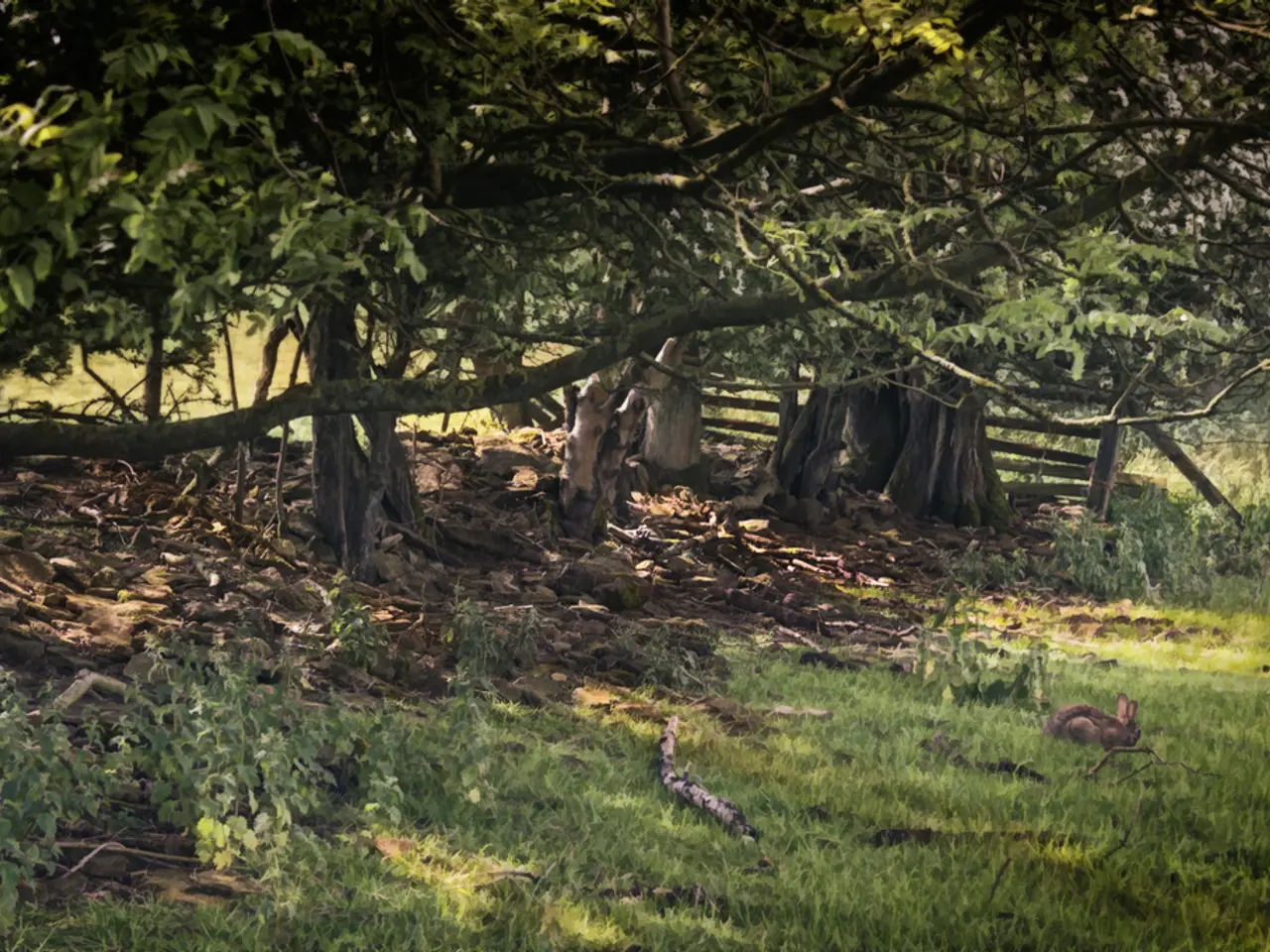Cultivating Naturally: Guide to Gardening Without the Use of Synthetic Pesticides
In the world of gardening, a new method is gaining popularity, thanks to SageSmokeSurvival on TikTok. Regenerative gardening is a team-effort approach that works with nature to grow richer, healthier soil and reduce weeds.
Unlike traditional gardening methods, regenerative gardening requires less watering. Instead, it focuses on building healthy soil ecosystems that support plant growth naturally, without relying heavily on synthetic fertilizers.
To start a regenerative gardening project, the grass in the planting area is cleared and replaced with compost or other organic materials like grass clippings, hay, or straw. This lays the foundation for a thriving garden ecosystem.
The soil under the mulch is then loosened up after it has broken down, using a broad fork or pitchfork. A six-inch layer of wood chips is then added for a mulch blanket, which smothers weeds, keeps moisture locked in, and breaks down into rich, living soil.
With the mulch and the compost, weeds are less likely to take over the garden. In fact, regenerative gardening avoids bare soil, as it invites weeds. Instead, plants can sprout directly in the compost, and it's encouraged to let them grow.
To maintain the garden, a compost bin is set up, and grass clippings, weeds, kitchen scraps, and anything from the fridge that got a little too enthusiastic about ripening are tossed in. This breaks down into nutrient-rich compost that can be reused in the next growing season.
By following these core principles and steps, regenerative gardening aims to improve soil quality every year, resulting in better output. The benefits include eating food that's better than organic. Additionally, nature often contributes to the garden, as frogs and toads may move in to eat bugs that would have eaten the plants, and worms may start tunneling through the soil, feeding the microbes that keep the garden thriving.
SageSmokeSurvival's approach involves five key actions to stop depending on fertilizers and foster a sustainable and thriving garden ecosystem. These include building soil health, minimizing chemical inputs, using natural amendments, and creatively managing space. For those in apartments or limited spaces, regenerative practices can be adapted through container gardening and regenerative garden style techniques.
By applying these principles—building soil health, minimizing chemical inputs, using natural amendments, and creatively managing space—you can successfully practice regenerative gardening as illustrated by SageSmokeSurvival. The garden, when maintained with regenerative gardening methods, becomes a team-effort environment that encourages collaboration among gardeners.
- In regenerative gardening, seeds are planted in compost or organic materials like grass clippings, hay, or straw, aiming to build a thriving garden ecosystem.
- Regenerative gardening focuses on building healthy soil ecosystems, reducing the need for synthetic fertilizers, and promoting organic methods for plant growth.
- After clearing the grass in the planting area, a six-inch layer of wood chips is added for a mulch blanket, which smothers weeds, keeps moisture locked in, and breaks down into rich, living soil.
- By using natural amendments and creatively managing space, a regenerative garden becomes a collaborative environment that encourages sustainable living and home-and-garden decor.
- To maintain a regenerative garden, a compost bin is set up to break down grass clippings, weeds, kitchen scraps, and other organic waste into nutrient-rich compost for the next growing season.





